| Listing 1 - 10 of 59 | << page >> |
Sort by
|
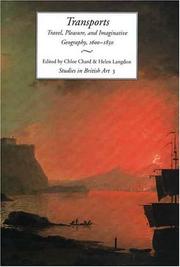
ISBN: 0300063822 9780300063820 Year: 1996 Publisher: New Haven Yale university press
Abstract | Keywords | Export | Availability | Bookmark
 Loading...
Loading...Choose an application
- Reference Manager
- EndNote
- RefWorks (Direct export to RefWorks)
reizen --- landschappen --- stadsgezichten --- topografie --- 1600 - 1830 --- 17de eeuw --- 18de eeuw --- 19de eeuw --- Groot-Brittannië --- Travel in literature. --- Travel in literature --- Voyages and travels in literature --- reizen; toerisme --- 1600 - 1830. --- 17de eeuw. --- 18de eeuw. --- 19de eeuw. --- Groot-Brittannië.
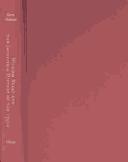
ISBN: 1281125873 9786611125875 0226502619 9780226502618 9780226502595 0226502597 9780226502601 0226502600 9781281125873 6611125876 Year: 2003 Publisher: Chicago University of Chicago Press
Abstract | Keywords | Export | Availability | Bookmark
 Loading...
Loading...Choose an application
- Reference Manager
- EndNote
- RefWorks (Direct export to RefWorks)
Modern scholars often find it difficult to account for the profound eccentricities in the work of William Blake, dismissing them as either ahistorical or simply meaningless. But with this pioneering study, Saree Makdisi develops a reliable and comprehensive framework for understanding these peculiarities. According to Makdisi, Blake's poetry and drawings should compel us to reconsider the history of the 1790's. Tracing for the first time the many links among economics, politics, and religion in his work, Makdisi shows how Blake questioned and even subverted the commercial, consumerist, and political liberties that his contemporaries championed, all while developing his own radical aesthetic.
Politics and literature --- Political poetry, English --- Antinomianism in literature. --- Imperialism in literature. --- Economics in literature. --- Slavery in literature. --- Liberty in literature. --- Freedom in literature --- Liberty as a theme in literature --- Slavery and slaves in literature --- Slaves in literature --- History --- History and criticism. --- Blake, William, --- Blake, W. --- Blake, William --- Blake, William, 1757-1827 --- Bleĭk, Uilʹi︠a︡m, --- בליק, ויליאם, --- בלייק, ויליאם, --- Political and social views. --- Religion. --- politiek --- slavernij; lijfeigenen en slaven --- cultuurgeschiedenis --- sociale geschiedenis --- 18de eeuw --- Enslaved persons in literature --- literature, liberty, slavery, freedom, politics, history, canon, poetry, romanticism, economics, imperialism, empire, antinomianism, aesthetics, drawings, illustrations, social change, activism, child labor, capitalism, protest, nonfiction, factory, industrialization, poverty, pollution, commodity, life, truth, sublime, class, religion, charity, morality. --- slavernij; lijfeigenen en slaven. --- Blake, William. --- 18de eeuw.
Book
ISBN: 9782705338367 2705338365 Year: 2010 Publisher: Paris : Geuthner,
Abstract | Keywords | Export | Availability | Bookmark
 Loading...
Loading...Choose an application
- Reference Manager
- EndNote
- RefWorks (Direct export to RefWorks)
Ce livre convie le lecteur à la rencontre d'une femme qui traverse le temps : la Sibylle. Exploration passionnante, jalonnée de surprises et d'émerveillement. C'est d'abord sous la forme d'une voix, mystérieuse et grandiose, qu'apparaît la Sibylle proférant l'oracle. Très tôt. la voix se matérialise et se multiplie jusqu'aux confins du monde grec où sont célèbres la Persique, la Libyque, la Cumaine, d'autres encore. Partout, la Sibylle incarne la divination inspirée. À Rome et à Alexandrie, c'est sa parole écrite qui a valeur sacrée. Avec le christianisme, l'antique prêtresse d'Apollon se voit adoptée en tant que " vraie prophétesse ". Étonnante transformation ! Le rôle de la Sibylle gagne en importance au sein de l'Église médiévale, et l'art chrétien s'approprie la Sibylle païenne - faits qui, étrangement. semblent avoir été occultés par l'Histoire. Au temps de la Renaissance, la Sibylle (voire le " concert des sibylles " en son entier) opère une entrée spectaculaire et triomphante dans les églises : à Sienne par exemple, le somptueux pavement de la Cathédrale présente dix Sibylles comme messagères de la Révélation. Une vogue qui n'est pas limitée à l'Italie. Cet ouvrage est illustré des plus belles représentations, en France et en d'autres pays, qui marquent cette période exceptionnellement féconde. Après le Concile de Trente, la figuration sibylline ne disparaît pas ; elle se transforme et s'adapte aux courants esthétiques. Toujours perçue comme la femme habitée par l'intuition des choses cachées, la Sibylle fascine et inspire peintres et sculpteurs, romanciers, poètes et musiciens. En pays catalan. le " Chant de la Sibylle " fait, encore aujourd'hui, partie de la tradition liturgique de Noël. Mais à côté de cette image dominante, tout auréolée de sacré, on trouve aussi, rarement, une Sibylle décrite comme magicienne. parfois dangereuse séductrice, parfois irascible rivale de la Vierge Marie ou fière rebelle qui fait songer à Lilith : comme si elle condensait, en une même personne dotée d'une puissance exceptionnelle, tous les traits, positifs et négatifs, de la féminité.
christelijke iconografie --- Sibille (waarzegster) --- Sibyls in art --- Sibys in literature --- Sibylles --- christelijke iconografie. --- Sibille (waarzegster). --- Sibyls --- Sibyls in art. --- Sibyls in literature. --- Sibylles. --- Sibylles dans l'art. --- Sibylles dans la littérature. --- Sibyls. --- Art. --- iconographie. --- History. --- Dans l'art. --- Histoire. --- Sibylle.
Book
ISBN: 9789460042607 9460042600 Year: 2016 Publisher: Nijmegen Vantilt
Abstract | Keywords | Export | Availability | Bookmark
 Loading...
Loading...Choose an application
- Reference Manager
- EndNote
- RefWorks (Direct export to RefWorks)
Cultuurhistorische verkenning van draken als fenomeen in folklore, legenden en beeldende kunst.
dragons --- Thematology --- Iconography --- Dragons --- Dragons in art. --- Dragons in literature. --- Dragons in motion pictures. --- History. --- draak --- draken --- draak.
Book
ISBN: 0712348891 9780712348898 Year: 2004 Publisher: London British Library
Abstract | Keywords | Export | Availability | Bookmark
 Loading...
Loading...Choose an application
- Reference Manager
- EndNote
- RefWorks (Direct export to RefWorks)
schrijvers --- tuinen --- English literature --- Gardens in literature. --- Nature in literature. --- Human-plant relationships. --- 712.26 --- 82 --- CDL --- Man and plants --- Man-plant relationships --- Plant-human relationships --- Plant-man relationships --- Plants and man --- Relationships, Human-plant --- Human beings --- Plants --- Botany, Economic --- Ethnobotany --- Synanthropic plants --- Nature in poetry --- History and criticism. --- Exhibitions --- Gardens in literature --- Nature in literature --- Human-plant relationships --- History and criticism --- tuin --- schrijvers. --- tuin.
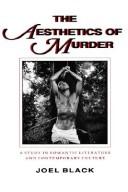
ISBN: 080184181X 0801841801 9780801841811 Year: 1991 Publisher: Baltimore, Md Johns Hopkins University Press
Abstract | Keywords | Export | Availability | Bookmark
 Loading...
Loading...Choose an application
- Reference Manager
- EndNote
- RefWorks (Direct export to RefWorks)
Sociology of literature --- Fiction --- Thematology --- Murder in literature. --- Romanticism. --- Detective and mystery stories --- Murder literature --- Murder in mass media. --- Literature and society --- History and criticism. --- History --- iconografie --- moord --- literatuur --- romantiek --- 82.0 --- Literatuurtheorie --- 82.0 Literatuurtheorie --- Murder in literature --- Murder in mass media --- Romanticism --- Pseudo-romanticism --- Romanticism in literature --- Aesthetics --- Literary movements --- Sociology literature --- Murder --- Mass media --- Literature --- Literature and sociology --- Society and literature --- Sociology and literature --- Sociolinguistics --- History and criticism --- Social aspects --- iconografie. --- moord. --- literatuur. --- romantiek.
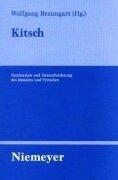
ISSN: 00834564 ISBN: 3484321121 311092448X 9783484321120 Year: 2002 Volume: 112 Publisher: Tübingen Niemeyer
Abstract | Keywords | Export | Availability | Bookmark
 Loading...
Loading...Choose an application
- Reference Manager
- EndNote
- RefWorks (Direct export to RefWorks)
Modern aesthetics is the product of a process of segregation. Works of art are something necessarily distinct from that which merely »finds the dubious acclaim of the crowd« (Schiller). All the way up to Adorno and beyond, this postulate asserted itself successfully. Any blurring of the boundaries between art and kitsch was pilloried as sacrilegious, as if art were a locus of something akin to theology. For that precise reason post-modernism has displayed provocative zest in dismantling such a categorization. Kitsch is the frank and unashamed expression of a need for emotional appeal and immed
Sociology of literature --- Aesthetics of art --- kitsch --- kunstkritiek --- literatuur --- Kitsch --- Kitsch in literature --- Congresses --- German literature --- Themes, motives --- Kitsch. --- Aesthetics --- 'kitsch', 'Trivialkunst'
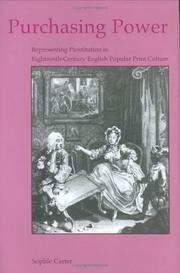
ISBN: 0754606295 Year: 2004 Publisher: Aldershot : Ashgate,
Abstract | Keywords | Export | Availability | Bookmark
 Loading...
Loading...Choose an application
- Reference Manager
- EndNote
- RefWorks (Direct export to RefWorks)
prostitutie --- grafiek --- sociale geschiedenis --- drukwerken --- 18de eeuw --- Groot-Brittannië --- Prints, English --- Prostitutes in art. --- Prostitution in art. --- Prostitution in literature. --- prostitutie. --- sociale geschiedenis. --- drukwerken. --- 18de eeuw. --- Groot-Brittannië.
Book
ISBN: 9781474455152 9781474455138 1474455158 9781474455169 1474455166 1474481213 9781474481212 1474455131 Year: 2022 Publisher: Edinburgh
Abstract | Keywords | Export | Availability | Bookmark
 Loading...
Loading...Choose an application
- Reference Manager
- EndNote
- RefWorks (Direct export to RefWorks)
This book takes an original approach to still life in modern literature and the visual arts by examining the potential for movement and transformation in the idea of stillness and the ordinary.
Still-life in art --- Still-life in literature --- Movement in literature --- Dance --- Modernism (Art) --- Modernism (Literature) --- Art, Modernist --- Modern art --- Modernism in art --- Modernist art --- Aesthetic movement (Art) --- Art, Modern --- Dances --- Dancing --- Amusements --- Performing arts --- Balls (Parties) --- Eurythmics --- Crepuscolarismo --- Literary movements --- modernisme --- stillevens --- Bloomsbury Group --- Cézanne, Paul --- Woolf, Virginia --- Fry, Roger --- Stevens, Wallace --- Mauron, Charles --- Huxley, Aldous --- Gertler, Mark --- Nicholson, Winifred --- Jones, David --- Morris, Margaret --- 19de eeuw --- 20ste eeuw --- Groot-Brittannië --- modernisme. --- stillevens. --- Bloomsbury Group. --- Cézanne, Paul. --- Woolf, Virginia. --- Fry, Roger. --- Stevens, Wallace. --- Mauron, Charles. --- Huxley, Aldous. --- Gertler, Mark. --- Nicholson, Winifred. --- Jones, David. --- Morris, Margaret. --- 19de eeuw. --- 20ste eeuw. --- Groot-Brittannië. --- Movement in literature. --- Still-life in art. --- Still-life in literature.
Book

ISBN: 9783777420936 377742093X Year: 2013 Publisher: München Hirmer
Abstract | Keywords | Export | Availability | Bookmark
 Loading...
Loading...Choose an application
- Reference Manager
- EndNote
- RefWorks (Direct export to RefWorks)
Art --- Bacchus --- Dionysus (Greek deity) --- Dionysus (Greek deity) in literature --- Dionysos (Divinité grecque) --- Dionysos (Divinité grecque) dans la littérature --- Exhibitions --- Cult --- Expositions --- Culte --- goden --- mythologie --- iconografie --- erotiek --- Dionysos --- Dionysos (Divinité grecque) --- Dionysos (Divinité grecque) dans la littérature --- Dionysus --- In literature --- Dionysus [Mythological character] --- goden (klassieke mythologie) --- goden (klassieke mythologie). --- mythologie. --- iconografie. --- erotiek. --- Dionysos.
| Listing 1 - 10 of 59 | << page >> |
Sort by
|

 Search
Search Feedback
Feedback About UniCat
About UniCat  Help
Help News
News